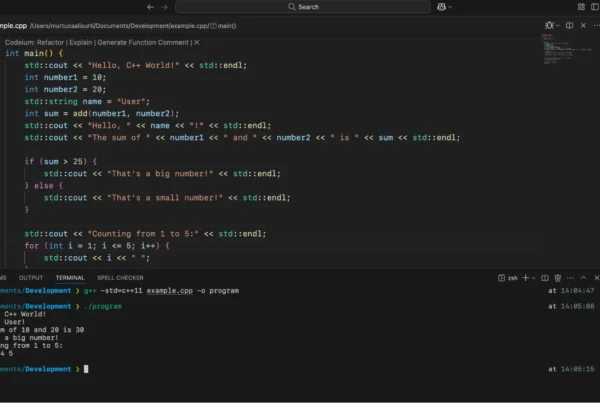🎯 What you should cover
Before jumping straight into doing every CTF challenge, it helps to build a strong foundation across several topic-areas. According to guides, key domains include:
- Web exploitation (injection, XSS, CSRF, etc) ctf101.org+2Medium+2
- Cryptography (classical ciphers, modern crypto) Medium+1
- Reverse engineering / binary exploitation ctf101.org+1
- Forensics & OSINT (log analysis, memory, network) Parrot CTFs+1
- General hacker mindset: recon → exploit → escalate/cover-up (for attack style) TryHackMe+1
- Tools / environments: Linux basics, command line, scripting (Python), network scanning, etc. InfoSec Write-ups+1
So I’d recommend your child adopt a phased approach:
- Foundation Phase – make sure basics are solid.
- Practice Phase – do guided challenges & platforms designed for beginners.
- Competition Phase – start applying in regular CTFs and then review/write-ups to level up.
- Specialisation & Teamwork Phase – pick a niche area (e.g., reverse or web) and maybe form/join a team, work collaboratively.
🧰 Recommended Resources
Here are some high-quality resources your child can use. I’ll highlight what they’re good for and how your child can use them.
1. picoCTF (by Carnegie Mellon)
- They provide learning guides: cryptography, web exploitation, forensics, binary exploitation. picoCTF
- Also challenge video tutorials and monthly lecture series. picoCTF
- Good for beginners — structured and student-friendly.
- Suggestion: Your child can do one learning guide per week and then try one easy challenge from a past competition.
- After solving, they should write a short reflection: what was learned, what tool used, what they didn’t know.
2. TryHackMe
- They offer free training labs and dedicated learning paths for beginners. TryHackMe+1
- Their blog also explains how to approach your first CTF with a framework (recon, exploit, escalate). TryHackMe
- Suggestion: Use TryHackMe’s beginner path (maybe 2-4 labs/week) and after each lab record a short log: tools used, what was tricky, what questions remain.
3. OverTheWire & similar war-games
- OverTheWire has very beginner-friendly “war games” to build Linux & command line skills. Mentioned in several beginner guides. Medium+1
- Also there’s CTFlearn (online platform with many challenges) listed in resources. Google Sites+1
- Suggestion: Pick over a one-month period a “game” in OverTheWire (e.g., Bandit) and aim to complete e.g., levels 1-10. That builds strong command-line fluency which is key.
4. Guides & Handbooks
- The “CTF101 Handbook” via the site CTF101 is excellent to understand methodology and challenge types. ctf101.org
- “How to Start CTF” articles (e.g., from TCM-Security) give strategy around time-boxing and reviewing write-ups. tcm-sec.com
- Suggestion: Have the child read one “methodology” article each week: e.g., “what is CTF”, “how to approach a challenge”, “how to document”. Then apply the principle in the next challenge.
5. Resource Aggregators / Lists
- The GitHub repo “awesome‑ctf‑resources” lists lots of platforms, write-ups, libraries. Good for later when he wants to dive deeper. GitHub
- Suggestion: After 2-3 months of practice, he can pick one area (e.g., reverse engineering) and pull 3-5 write-ups of solved challenges in that area to study.
📅 Sample 8-Week Starter Plan
Here’s a sample weekly schedule (approx) for your child (assuming maybe 3–4 hours/week outside school). You can adjust based on availability.
|
Week |
Focus |
Activity |
|
Week 1 |
Foundation & Linux command line |
Start OverTheWire Bandit lvls 1-5. Read “What is CTF” article. |
|
Week 2 |
Web exploitation basics |
Use picoCTF “Web Exploitation” guide. Try one easy web challenge. Write reflection. |
|
Week 3 |
Cryptography basics |
Use picoCTF crypto guide. Try two crypto challenges from past CTF. Read methodology article. |
|
Week 4 |
Forensics / OSINT basics |
Use TryHackMe beginner lab on forensics / logs. Choose a challenge from CTFlearn in forensics. |
|
Week 5 |
Try a small CTF competition |
Choose a beginner-friendly CTF event (online, time-limited) or set time-limit self-challenge: pick one challenge each from web/crypto/forensics in one session. After finish, review write-ups of others. |
|
Week 6 |
Reverse engineering / binary basics |
Use CTF101 handbook section on binary exploitation. Pick simple binary challenge (maybe from CTFlearn). |
|
Week 7 |
Review & reflect |
Go back to 3 challenges that took longest and fully write write-ups: what was done, what didn’t work, what tool used, what you’d do differently. |
|
Week 8 |
Choose specialisation & team mindset |
Choose area (web/crypto/forensics/reverse). Join an online CTF community or form a 2-person team (maybe friends). Attempt a longer CTF (4-6 hrs) as a team. |
As the user (you) are involved in coaching/education (with your tuition service background) you might even consider assigning your child (or your students) a “CTF weekly challenge” as part of their extracurricular enrichment — with check-in and reflection.
✅ Tips for Success
- Encourage note-taking and personal write-ups. The act of writing what you did and what you learned greatly helps retention. Many articles emphasise this. TryHackMe+1
- Use a timer when doing challenges. If stuck for e.g. 30-45 minutes, move on then review write-up rather than get stuck indefinitely. tcm-sec.com
- Join a community or team: CTFs are often more fun and effective when done with others.
- Keep a logbook: challenge name, category, time spent, what didn’t know, what tool used, flag found (how). After a few months you’ll see patterns and can pick your weak spots.
- Reflect on tools: don’t just know which tool (e.g., Burp Suite, Ghidra, Wireshark) but why and when you used it.
- Encourage curiosity over following steps blindly: The mindset of “What’s the system/architecture? Where might the vulnerability hide? What hints does the challenge description give?” is important. TryHackMe+1
- Make time for reviewing write-ups of solved challenges (especially for ones you couldn’t solve). This helps you learn new techniques. tcm-sec.com








